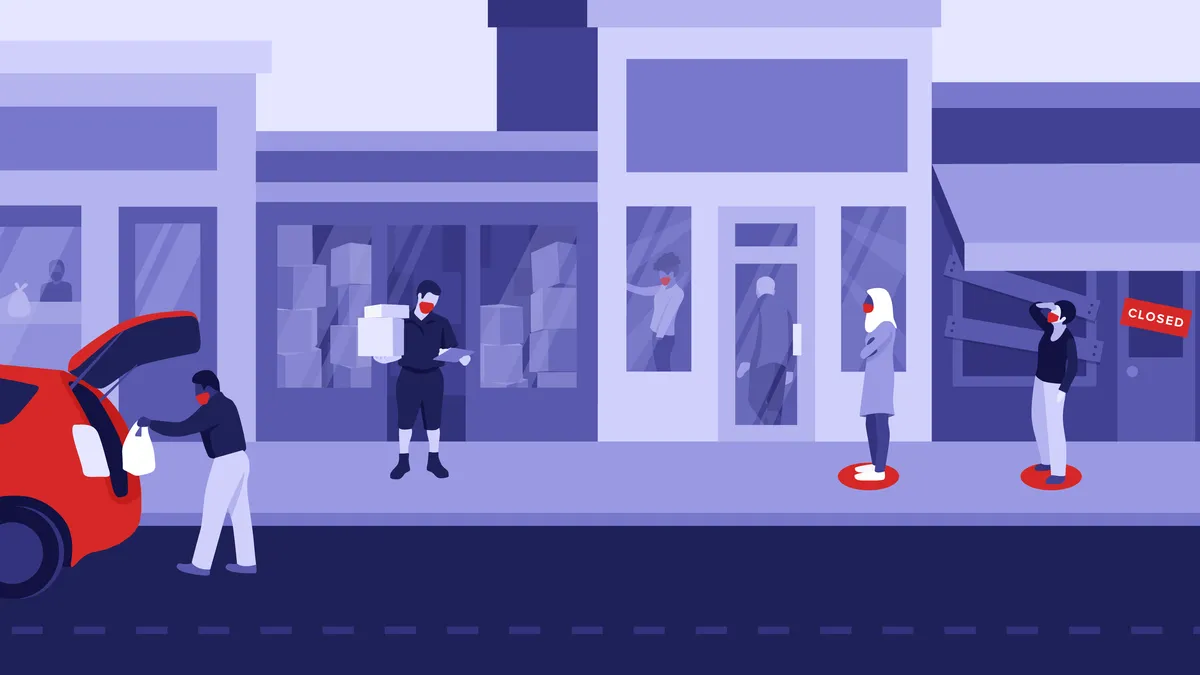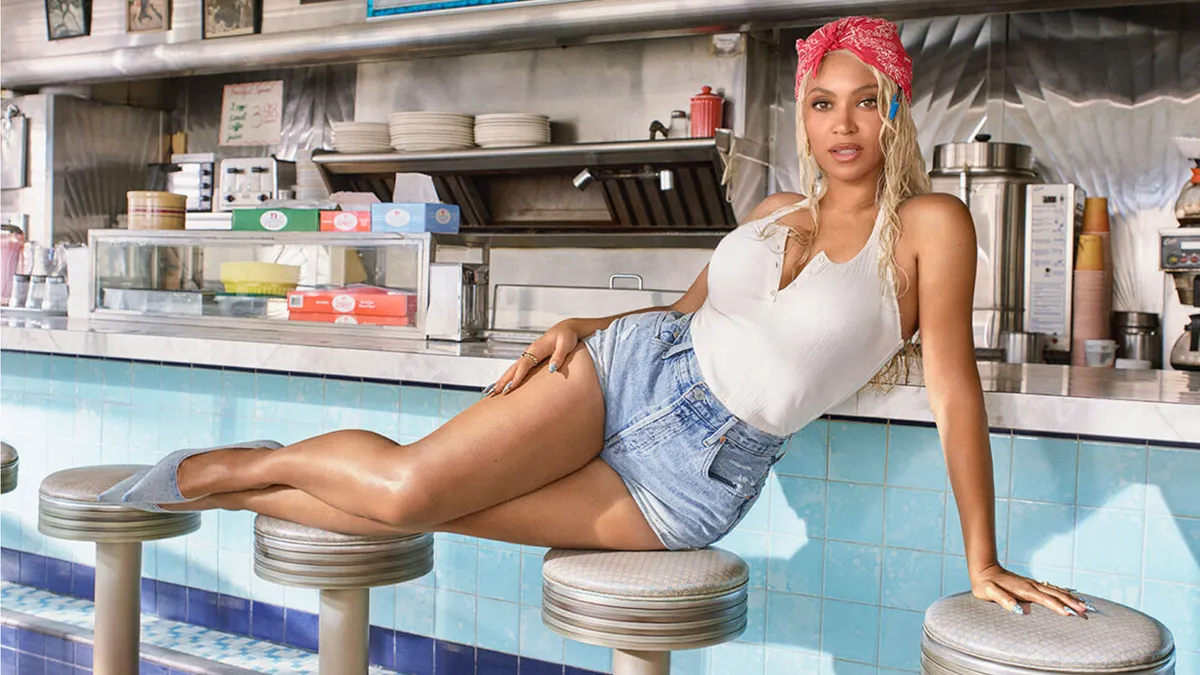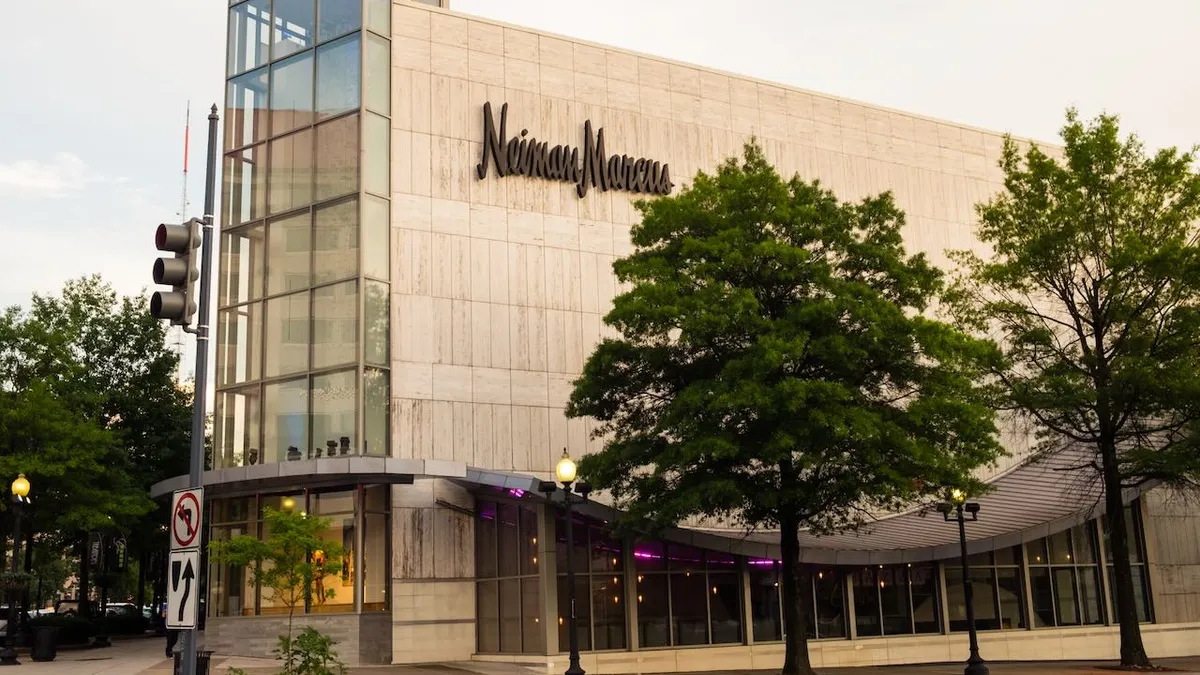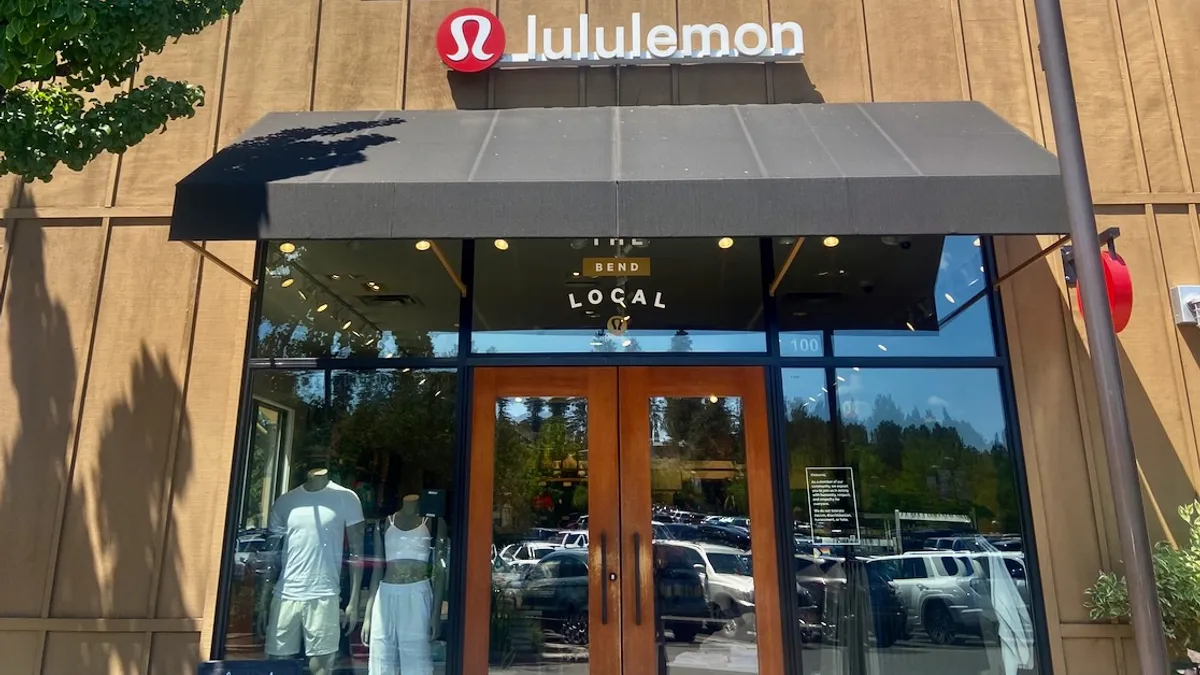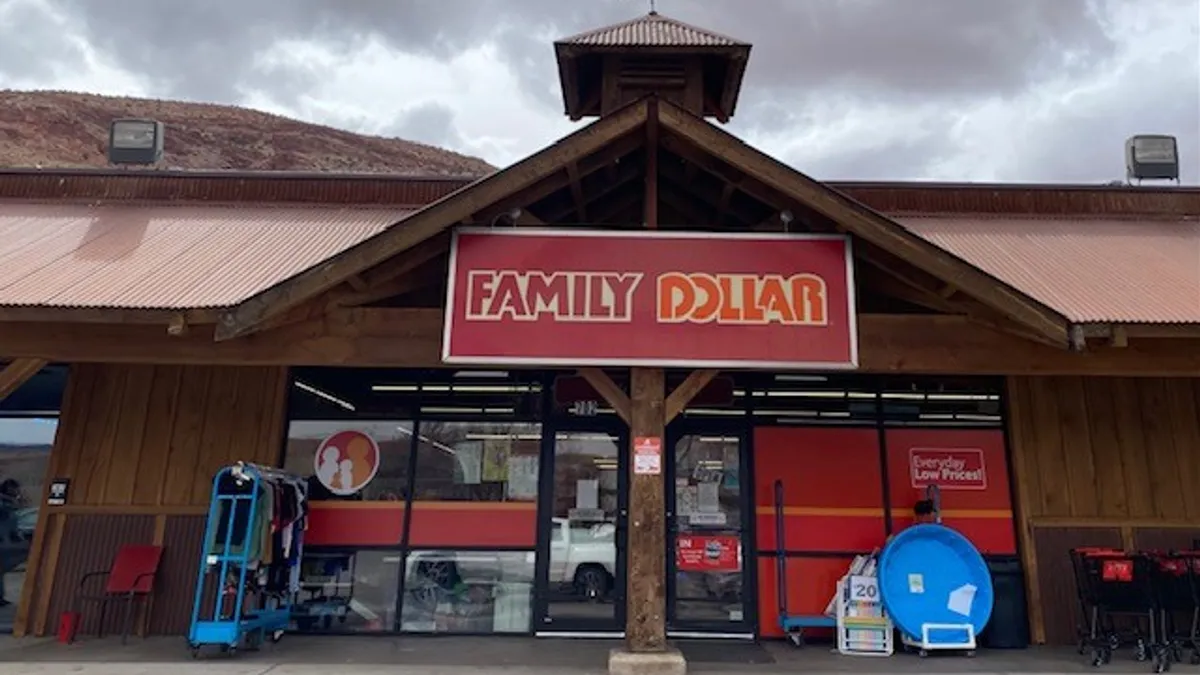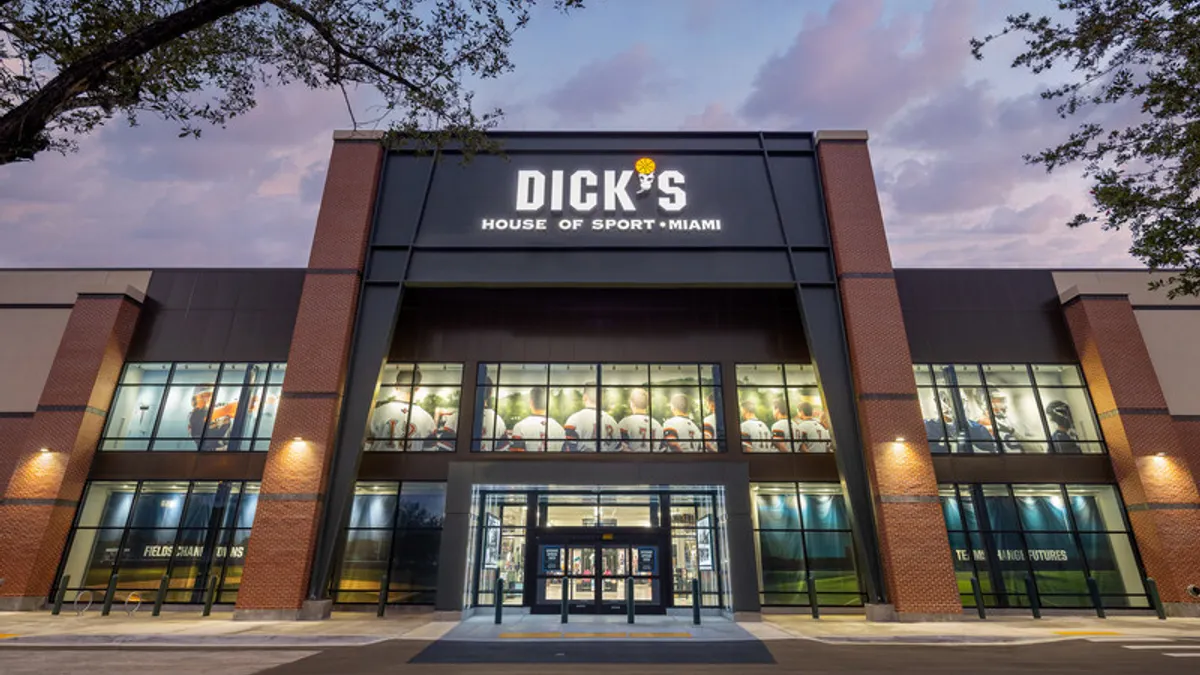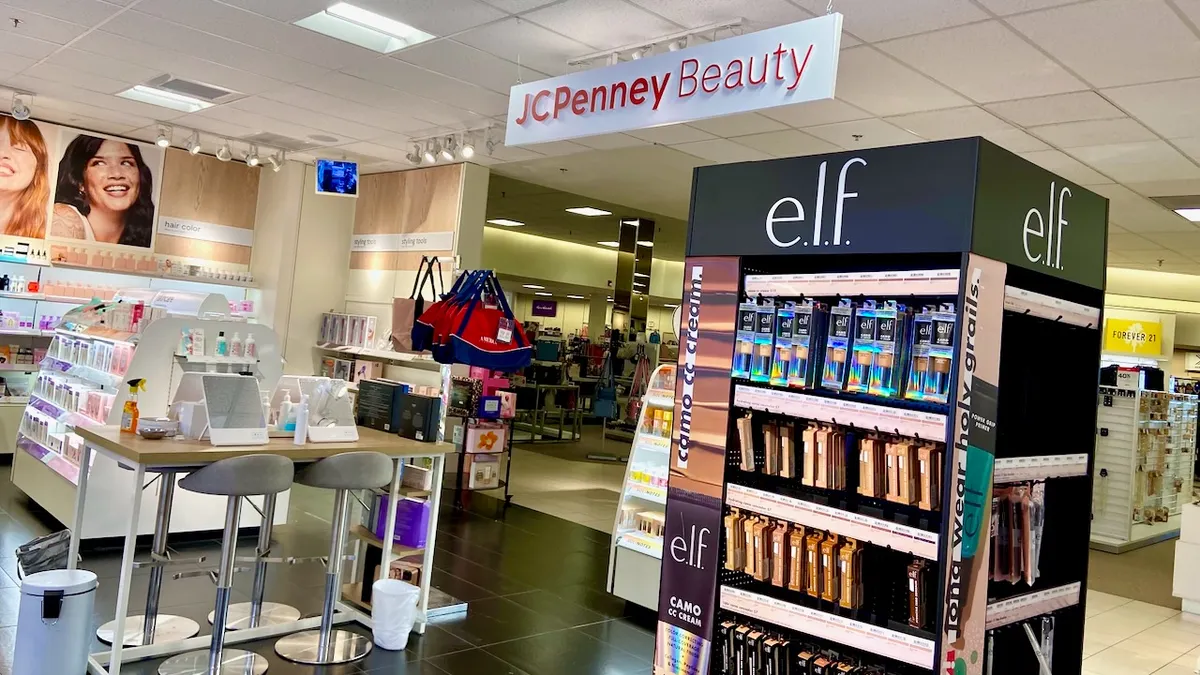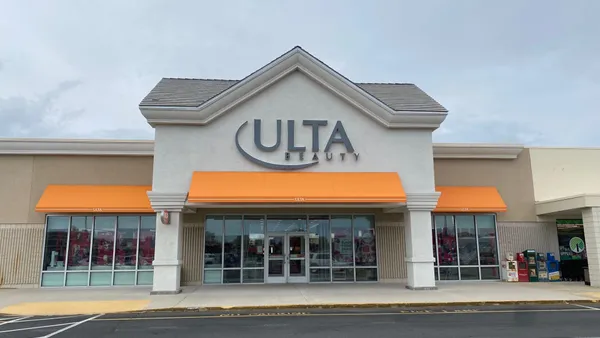Editor's Note: This story is part of a series about the pandemic's impact on retail in 2020, and what it means for 2021. Find the rest of the stories here.
While it's technically a new year, retailers face many of the same challenges they tackled in the previous one. The pandemic, though missing the element of surprise it had in 2020, is still a critical factor.
The vaccine progress provides a proverbial light at the end of the tunnel for retailers, but it doesn't do away with any of the near-term hurdles they face. It's unclear how long the rollout of a vaccine will take, and when consumer behavior will return to "normal," or what the new normal will be. Trends accelerated by the pandemic will continue to pose problems for retailers as they look to catch up.
"Supply chain infrastructure will continue to see major disruption in 2021," Tyler Higgins, retail practice lead and managing director at global management consultancy AArete, said in an email. "Pressure for home delivery and the run on key product categories has put pressure on retailers to re-think their distribution and transportation model. Though retailers have been under pressure throughout all of 2020, now their infrastructure needs to be prepared for the 'new normal' of 2021 once the pandemic slows down and the vaccine rolls out."
That means supporting new consumer expectations around home delivery, Higgins said, among other things.
Spending all of 2020 in a relative state of chaos also means that retailers have been more focused on stopping the bleeding than looking ahead. Few companies have had the ability to make investments for the future in the past twelve months, and that will impact the space going forward.
"Most retailers have put in place austerity measures, which means that they've slowed investments in innovation," Shannon Warner, a partner in the consumer practice at Kearney, said. "Even those retailers who have been buoyed by the pandemic, they've been really focused on getting through this year and less focused on the two- to three- to five-year horizon. And so I think that there will be sort of a lasting impact for a period of time on the progress of innovation as a result of the pandemic."
Retailers will be dealing with the pandemic's impact no matter how long the actual health crisis remains an active concern in 2021. Whether that means taking stock of services implemented in 2020 and determining which ones are financially sustainable and which need to be tweaked, or just keeping up with changed consumer behavior habits, this year won't be back to 2019's definition of normal.
"[There's a] need to really think about not just trying to get back to what you did, but using this — and people are — as the opportunity to transform operating models," Matt Katz, a managing partner at global advising firm SSA & Company, said. "Consumers will tell us where they want to shop and how they want to shop and it's up to retailers and brands to adapt to that and serve them in the best way possible. It's not about trying to get them to act the way they did. This has been a dramatic change not only economically and health wise, but socially. This is a watershed moment for retail."
Here's a recap of some of the biggest impacts the pandemic had on retail.
E-commerce soared
It was one of the most immediate effects as the virus swept across the United States. Consumers were told to stay home from work and school to contain the spread, so they stopped going to stores and started placing those orders online. The result was a projected 32.4% year-over-year increase in retail e-commerce sales, according to eMarketer. The research firm expects e-commerce sales to reach nearly $795 billion for the full year, up from just over $600 billion in 2019.
Retail observers, and retailers themselves, expected the share of e-commerce to grow over time to be a significant portion of sales, but the global health crisis accelerated that. Higgins expects a corresponding boom in social commerce, including through popular platforms like TikTok and Instagram, and a focus on integrating more straightforward buy functions in the future.
"We estimate that the share of US e-commerce jumped to 19.0% in 2020, which would not have occurred until around 2023 based on the trajectory of e-commerce increasing 1.25% each year between 2017 and 2019," Deborah Weinswig, CEO and founder of global advisory and research firm Coresight Research, said in an email to Retail Dive. "This acceleration will again affect retailers' decisions on store fleet size and also increase their rate of technology adoption to handle the greater share of online sales and keep pace with technology-fueled online retailers."
Foot traffic plummeted, and (somewhat) recovered
Hand in hand with the surge in e-commerce was the swift decline of foot traffic. Temporary store closures taken as a safety precaution while the U.S. more broadly tried to get a handle on how to address the pandemic put an abrupt end to in-store shopping trips. Even when stores reopened, it was to a changed landscape and to a consumer understandably wary of entering physical stores unless necessary.
Foot traffic analytics firm Placer.ai found that year-over-year foot traffic collapsed by 26% in March, followed by 45% and 30% in April and May, respectively. Since June, it's improved, but traffic has still been down by between 13% and 18% every month. "The lingering impacts of changes to office work culture, ongoing economic uncertainty, and even shifts away from cities could have a major impact on retail," Ethan Chernofsky, VP of Marketing at Placer.ai said. Chernofsky also noted that throughout the year retail "bounced back" despite the coronavirus surges.
Although the worst of the foot traffic damage was done in the early months of the pandemic, retailers could be stuck with lingering effects until vaccinations are widespread in the U.S.
"It'll be a different normal, and it won't recover to numbers you're comfortable with until we solve the health, social and economic issues," Katz said. He pointed to fewer people in stores because of social distancing mandates, as well as uneven openings across retail and physical barriers in stores as continued impacts on foot traffic into the new year. "Until you solve those social safety and health issues, you're not gonna return to the levels that you had before, which may not be a bad thing, right? You could probably do more per transaction if you had more time with customers. Now, you got to make the customer want to spend that time."
To that end, Higgins said stores will have to be more innovative with experiential shopping to entice shoppers — a tall order given that many experiential shopping features have been touch-based in the past — and Higgins also predicts no-inventory and pop-up stores to continue growing, as well as foot traffic declines to continue in 2021.
Retail sales bounced back, but apparel fell hard
An inevitable sales hit accompanied the pandemic, particularly glaring in March and April, when retail sales fell 1% and 16%, respectively. Once the summer came, things got better for retailers, as consumers started to feel safer and stores had a better idea of how to operate under the new constraints. June and July sales both rose 11% year over year, and by the same amount again in September.
The rest of the fall posted relatively strong results as stimulus checks and pent-up demand helped to push consumers back to stores. In December, during the all-important holiday season, retail sales rose 6.7% thanks to consumer savings on expenses like travel being funneled into gifting instead.
However, the story by sector wasn't always so rosy. E-commerce, as expected, posted phenomenal growth throughout the year, but almost as phenomenal was the steep decline of apparel sales for most of the year. Year over year, sales in the category fell 53% in March, 89% in April, 64% in May, 25% in June and 20% in July. In fact, once March hit, apparel sales did not increase a single month the rest of the year.
By Coresight Research's measure, U.S. sales of clothing and accessories fell 30% from January to October, "which is likely to lead to substantial store closure announcements and/or bankruptcy filings among retailers selling apparel and similar product categories," according to Weinswig.
"Moreover, many retailers likely hung on through the crucial holiday season in hopes that it would make up for a difficult year," Weinswig said. "The initial figures show a solid, but not spectacular holiday season."
Store closures continued to pile up
On the backs of all those foot traffic declines, and the movement of more sales to e-commerce, came a large number of permanent store closures. 2019 was already a bad year for retailers in terms of the sheer number of brick-and-mortar locations that were shuttered — 9,832, per Coresight Research — but 2020 followed up with 8,736 of its own. For reference, the number of store closures in 2019 was a good deal larger than in 2018 — closures rose 72% that year.
While 2020 did not hit the store closure levels Coresight Research indicated was possible at the start of the year, it marked the fourth consecutive year that the net of store openings versus closings was negative, and the surge of store closings likely isn't about to stop in 2021. Weinswig expects a spate of store closure announcements in January, a regular occurrence as retailers finalize their physical footprint plans for the year, and predicts the acceleration of e-commerce this past year will also impact those plans.
"This tectonic shift in demand from offline to online will have major ramifications for retailers in 2021, as they adapt to accommodate this move to e-commerce," Weinswig said. "Nordstrom, for example, reported that the majority of its third-quarter sales (approximately 54%) were online, which has major implications for its store fleet."
Bankruptcies stacked up, with more to come
It's hard to talk about store closures without also discussing bankruptcies. For the four years that Retail Dive has tracked major retail bankruptcies, 2020 was a record high — and it was high for other firms, too. S&P Global Market Intelligence recorded 52 retail bankruptcies within the companies it covers, which is 63% higher than the previous year. For three of the past five years, retail bankruptcies have topped out at between 32 and 34 per year, according to S&P, and even 2017, a particularly tough year for retailers, notched 12 fewer bankruptcies than 2020.
While many retailers filed in the midst of the pandemic, many more are likely to follow in 2021 as they combat the lingering challenges left by the global health crisis.
"We can expect continued bankruptcies and store closures within the apparel segment and within those stores that have a heavy mall footprint," Higgins said. "Segments that have been hit hardest, such as apparel, will continue to be threatened. The COVID-19 pandemic hasn't significantly changed the state of retail heading into 2021. Until a vaccine helps open up the industry, retailers that have seen great success through 2020 will continue to while those that have been threatened will still see store closures and potential bankruptcies."
Weinswig expects a continued shakeout in the industry, noting that many regional mom-and-pop stores will likely disappear and the landscape will center on "retailers with a solid financial footing, plus those that have shown resilience."
Retail stocks took a nosedive, but ended the year strong
Considering the blow that the retail industry took in the first few months of the pandemic, it's not necessarily surprising that the Dow Jones U.S. Retail Index fell considerably in March. However, beginning in mid-April, performance improved steadily over the course of the year.
"It looks like we'll get back to growth, and investors will continue to invest," Warner said of the retail industry. "Shoppers still shop and will continue to shop. It's just a matter of the nature of retail reshaping as a result of consumer behaviors, whether they're temporary or permanent."
Weinswig predicts a "healthier retail environment" in 2021, particularly the second half of the year, thanks to the vaccine rollout and the new round (or possibly rounds) of consumer stimulus, which will inject cash into the economy. Where consumers choose to spend that money, though, may be more of an open question than 2020.
"Therein lies something of a challenge for retail: The previous near-complete evaporation of consumer spending on entertainment and leisure freed up funds for the purchase of goods," Weinswig said.



